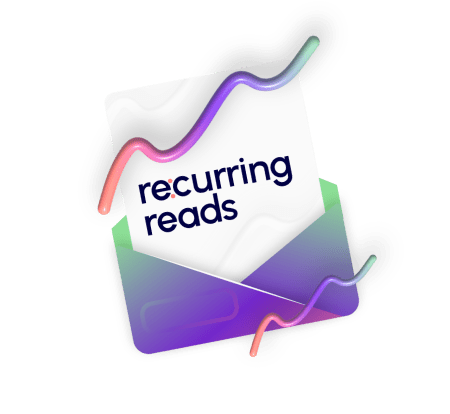Why Nifty Account Onboarding Is the Shortest Path to Great Account Servicing
Account onboarding is said to be like a goldmine for B2B SaaS organizations. In this blog, we look at the varied reasons that make account onboarding the shortest path to great account servicing.


The decisions your business makes during the account onboarding process can be crucial for determining the future success of an account. Account onboarding can help your business address customer queries and concerns related to the value your products and services can provide them. Therefore, successful and effective account onboarding helps customers determine exactly how your business’s offering will provide them with the expected value and achieve their desired outcome.
One of the key reasons for customer churn is that your accounts may not understand or believe that the benefits you can provide them are worthwhile or justifiable. Therefore, the account onboarding process involves constructing a frictionless path to value by ensuring that customers are satisfactorily engaged. Successful account onboarding can help new accounts familiarize themselves with your products and services, reduce customer churn and increase customer lifetime value.
Furthermore, more technical solutions may require more extensive account onboarding processes, depending on the level of perceived complexity. Therefore, it is crucial to closely monitor, observe and address various stages of the account onboarding process, from sign-up to ultimate value realization. Research indicates that approximately 60% of companies have stated that they are not satisfied with their current onboarding experience for their products or services.
The Jobs-To-Be-Done Framework:
As defined by the Re-Wired Group, the Jobs-To-Be-Done framework identifies four primary forces that help influence and affect a user’s decision to select and stick to a specific product or service:
- The push to search for and find a satisfactory solution to current problems that the user may be facing.
- The pull and allure of what a new product may be able to do and the various benefits they may derive from it.
- The resistance and inertia against change
- The fear and anxiety around the various risks of switching to a new product.
A successful account on-boarding process involves understanding the push towards a product, strengthening and intensifying the pull, overcoming resistance and inertia, and reducing fear and anxiety. This is where account servicing can help your business.
- Understanding The Push- While it may not be possible for your business to understand the pain points of a customer’s existing state (their current solution), you can further understand the unique value that you may be able to provide. By analyzing and understanding the pain points of alternative solutions similar to yours, you will be able to determine further the unique value that you can provide to customers and hence tailor push strategies more effectively.
- Strengthening The Pull- Selecting and adopting a new product/service can often be extremely time-consuming and tedious. It can be extremely easy for new accounts to abandon your business’s offerings if they don’t immediately recognize the value. Therefore, it is crucial for your customer success managers to rigorously try to help new accounts progress to new stages of the account on-boarding process. The most effective methods of convincing new accounts to move to the next stage of the onboarding process are providing hard, data-backed metrics and presenting relevant testimonials and success stories. Furthermore, numerous different key decision-makers or stakeholders are involved in an onboarding process, your business’s Job-To-Be-Done framework must be tailored accordingly. Different decision-makers and stakeholders across different levels of managerial hierarchy and potential objectives may be drawn toward different benefits of your business’s offerings. Therefore, highlighting different benefits to each stakeholder can significantly improve the probability of account success.
- Overcoming Resistance and Inertia- Accounts may still face inertia or resistance to change in fear of vendor lock-in, uncertainty about available alternatives, admitting that existing solutions do not satisfy needs and desires, and much more. Therefore, customer success managers must prioritize helping accounts overcome inertia and resistance by providing them with detailed guidance for complex onboarding, configuration, and value recognition aspects. Your business can do this by carefully analyzing each account and deciding a course of implementation and decision-making that best suits their preferences and requirements. This can help avoid the number of complex decisions and options each account may have to navigate, significantly reducing leakage from this stage of the account on-boarding process. Furthermore, helping accounts understand that your business is supporting them through each stage of solution implementation can help facilitate trust and ensure that they do not lose momentum or motivation during the onboarding process.
- Reduce Fear and Anxiety- Account on-boarding steps that require a high level of involvement or highly visible steps towards switching solutions can typically be anxiety or fear-inducing. Therefore, if possible, placing anxiety-inducing onboarding steps later on in the account servicing process can help avoid account leakage at earlier stages. Furthermore, reducing the path to success for extremely technical and complex products and services so that accounts can identify value at an earlier stage can be extremely effective. Recent studies have shown that 74% of potential accounts will switch to other solutions if the account on-boarding process is too complicated.
These four stages, if performed in tandem and simultaneously, can be extremely beneficial for helping new accounts recognize the value of your business’s products and services, as well as helping them overcome various roadblocks and obstacles that may limit them from progressing forward.
The Account On-boarding Process From An Account Servicing Perspective:
At some point during the sales process, sales personnel should prepare the account for a relationship handover with the Customer Success Management (CSM) department. The account’s customer success manager will be responsible for ensuring that the customer achieves their desired outcomes efficiently and effectively, as well as recognizing the value of your business’s offerings.
When the sales department is handing an account over to the customer success management department, it is crucial to identify and communicate what product or service the customer purchased, what problem or desire they were trying to fulfill through the purchase, the decision-makers, and individuals with purchasing power for a specific account and the potential obstacles that must be overcome to ensure account success. Recent studies have shown that approximately 63% of potential customers and accounts consider the onboarding period when deciding to subscribe or purchase a product, service, or subscription.
When a customer success manager takes over a specific account, it can also be extremely useful to develop detailed and comprehensive account onboarding playbooks that clearly detail which tasks must be achieved to ensure account success. Furthermore, key success metrics can be efficiently and effectively tracked using Customer Relationship Management (CRM) software.
If your business’s products or services are fairly technical and require additional software or complex user interfaces, this may present a roadblock. Customers may abandon a product during the onboarding stage if the benefits are not immediately apparent and require significant additional effort from their end. Therefore, customer success managers must conduct a detailed analysis to determine whether or not additional training may be required to ensure satisfactory account servicing and thus facilitate account success. After this, a meeting with the IT department may be required to refine further and clarify the integration of your account’s platform with different tools.
Why Nifty Account Onboarding Is The Shortest Path To Great Account Servicing:
1. Reducing Friction
There can be a wide variety of obstacles that may create friction during account onboarding processes. These include a lack of identification of value from your business’s product or services, a lack of ability to dedicate to implementation cycles, anxiety about a public solution adjustment, and much more. These sources of friction may typically contribute to early account leakage during the account onboarding process.
However, effective account onboarding processes can enable your business to significantly reduce friction by supporting accounts through each step of the implementation and configuration phase, and anticipating and addressing potential roadblocks during the process. Furthermore, account onboarding can help your business develop comprehensive playbooks and customer journey maps that can facilitate and empower future account servicing processes.
2. Further User Segmentation and Personalization
Account onboarding processes typically require customer success teams to segment and personalize account onboarding processes for each customer. This may depend on the complexity of their chosen product or service, the level of involvement required to avoid account leakage, the problem or desire they are attempting to fulfill with their purchase, and much more. This process of segmentation can be extremely beneficial for ensuring that customers are successfully onboarded without any difficulties. Furthermore, this process of user segmentation is not only useful for guiding accounts through the implementation and configuration process. Still, it can also be extremely beneficial for personalizing all future customer communication during the account servicing phase.
3. Allows Customers To Recognize Value
One of the biggest contributors to customer leakage during the account onboarding process is when key decision-makers and stakeholders are unable to identify value or need satisfaction from your business’s products or services. Therefore, account onboarding processes can not only help indicate value to potential accounts but also teach them exactly how to utilize your offerings to derive the most amount of utility.
Account onboarding helps push new accounts to the activation point by providing them with practical, first-hand experiences to identify and ascertain the value of your offerings. Therefore, when users can emotionally connect with a product when deriving value from it, they will be more likely further to align themselves with your business and its solutions.
4. Reducing Customer Churn
Since account onboarding processes involve identifying areas of potential resistance/anxiety and targeting individual concerns, your business will be able to tailor implementation, configuration, and training processes more effectively for each account. Since each account will be able to understand exactly how to derive their desired level of value from your product or service, they will be less likely to abandon the onboarding process in favor of another service provider or vendor.
5. More Cost-Effective Customer Success Strategies
Account onboarding can be extremely transformative for increasing customer retention levels. Therefore, your business will be able to significantly reduce organizational costs by substantially reducing acquisition and lead generation costs. Therefore, your business will be able to increase organizational revenue without having to implement resource-intensive and time-consuming customer success strategies. This time and scarce resources can then be consequently allocated to more complex aspects of account servicing.
6. Account Referrals
Existing accounts can typically be one of the most effective potential revenue and marketing channels. Account referrals refer to scenarios wherein an existing account recommends your business’s solutions to an external prospective account. Account referrals typically occur when an existing account is extremely satisfied with your business’s offerings. Account onboarding can be extremely useful for not only satisfying the needs of accounts during the onboarding success so that they refer you to other prospective accounts but can also help establish success stories to attract additional prospective accounts further.
Take Advantage of Account Onboarding For Great Account Servicing:
Effective onboarding processes can be extremely transformative and beneficial for your business’s productivity, revenue generation, and profitability if performed properly. Account onboarding processes are typically the first time potential customers interact with your business and its offerings. Therefore, carefully designed account onboarding processes are crucial for determining if customers will continue to do business with your company in the future.
Due to the wide variety of short-term and long-term benefits of account onboarding for your business, it is the shortest path to great account servicing. However, although creating an effective account onboarding strategy is critical, it may not be successful unless your organization has a reliable account servicing specialist or account onboarding specialist to ensure that the entire process runs smoothly.
Numerous strategies can help your business empower effective account onboarding and consequent account servicing. These strategies can be transformational for your business if applied concurrently, simultaneously, and consistently. Therefore, the aforementioned step-by-step guide can help your business understand what account onboarding is, the framework for executing account onboarding, account onboarding processes from an account servicing perspective, and the various benefits of nifty account onboarding.
You might also like:
- How to Design and Track a Customer Account Journey for B2B? – Do you know how to create better outcomes for the post-sales customer journey? If not, this blog is specially written for you!
- To see how SmartKarrot helps B2B companies streamline and scale customer success, Request a Demo.










